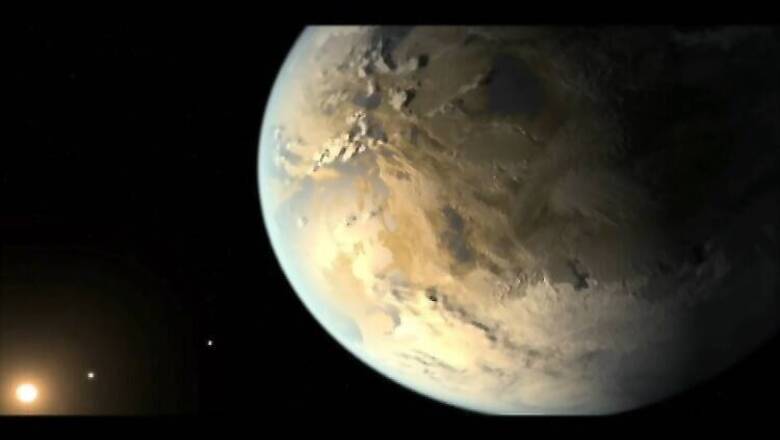
views
Scientists of US space agency NASA are likely to have discovered a earth sized plan orbiting a star. The planet falls within the zone in that solar system where it's possible for liquid water to exist. Research suggests the planet may also be rocky like earth. The discovery is an important step in NASA's attempts to find life outside earth.
The US space agency will be holding a press conference on Thursday to reveal the latest discoveries of its exoplanet-hunting Kepler Space Telescope. The scope, launched in 2009, seeks out planets that reside in the habitable zone, known colloquially as the Goldilocks zone. Kepler Space Telescope has been scouring the skies for planets outside our own solar system.
The majority of the planets identified by Kepler have been giant gas planets, like Jupiter, with only eight being less than twice Earth's size and in the Goldilocks zone. It's suspected that the Nasa announcement could confirm the identification of the most Earth-like planet to date.
"Exoplanets, especially small Earth-size worlds, belonged within the realm of science fiction just 21 years ago. Today, and thousands of discoveries later, astronomers are on the cusp of finding something people have dreamed about for thousands of years -- another Earth," a Nasa release said.
Kepler has already confirmed more than 1,000 exoplanets and 3,000 planet candidates using something called the transit method. The 0.95m-diameter telescope monitors the brightness of around 100,000 stars, looking for any dimming. That dimming occurs when a planet passes behind its star in orbit.
Earlier in 2015, Kepler found another eight new planets in the Goldilocks zone, doubling the number of exoplanets found that have a diameter less that double Earth's. The two most Earth-like planets in this new discovery were named Kepler-438b and Kepler-442b, but both were larger than Earth and orbiting red dwarf stars far cooler than our own Sun.













Comments
0 comment